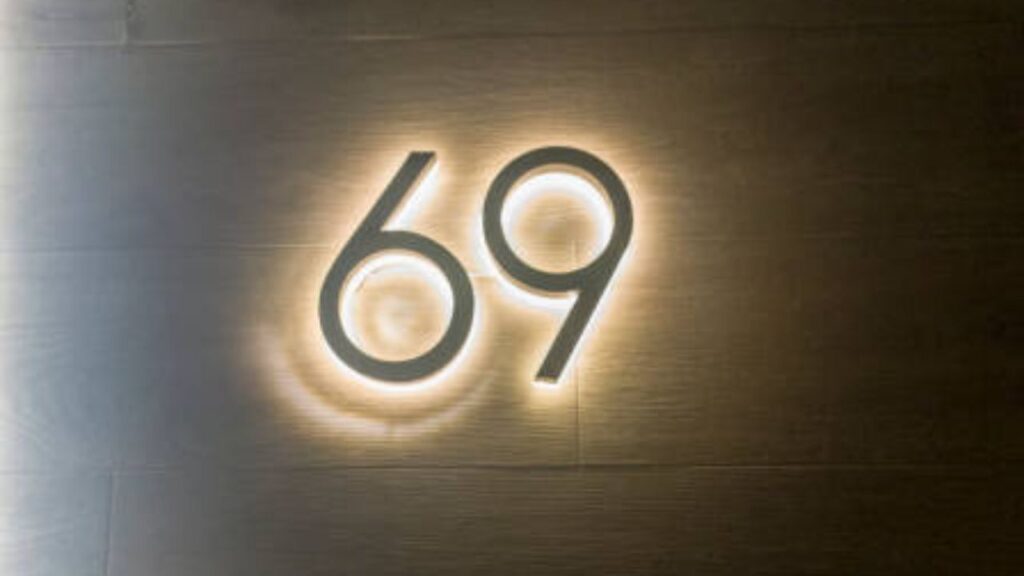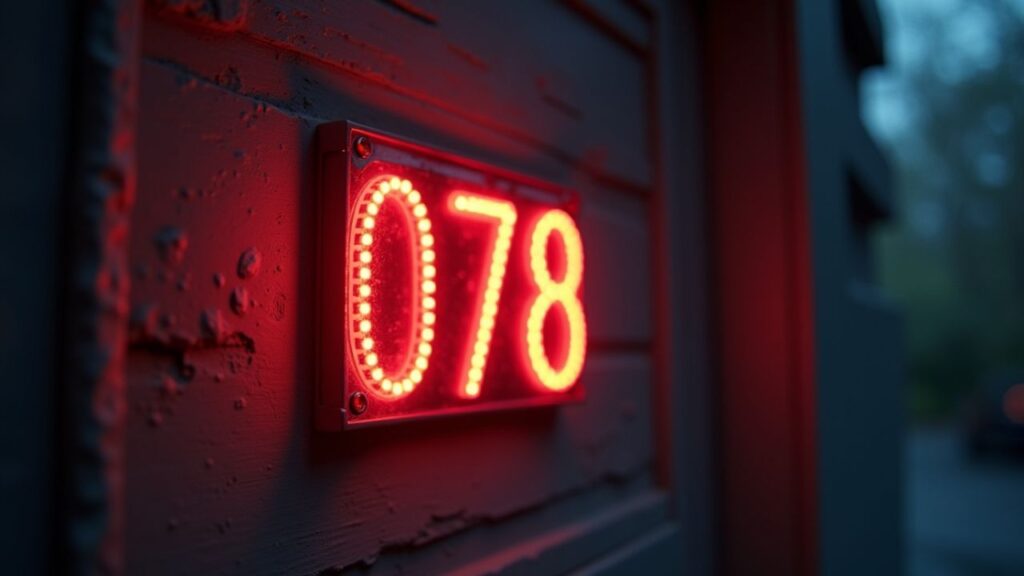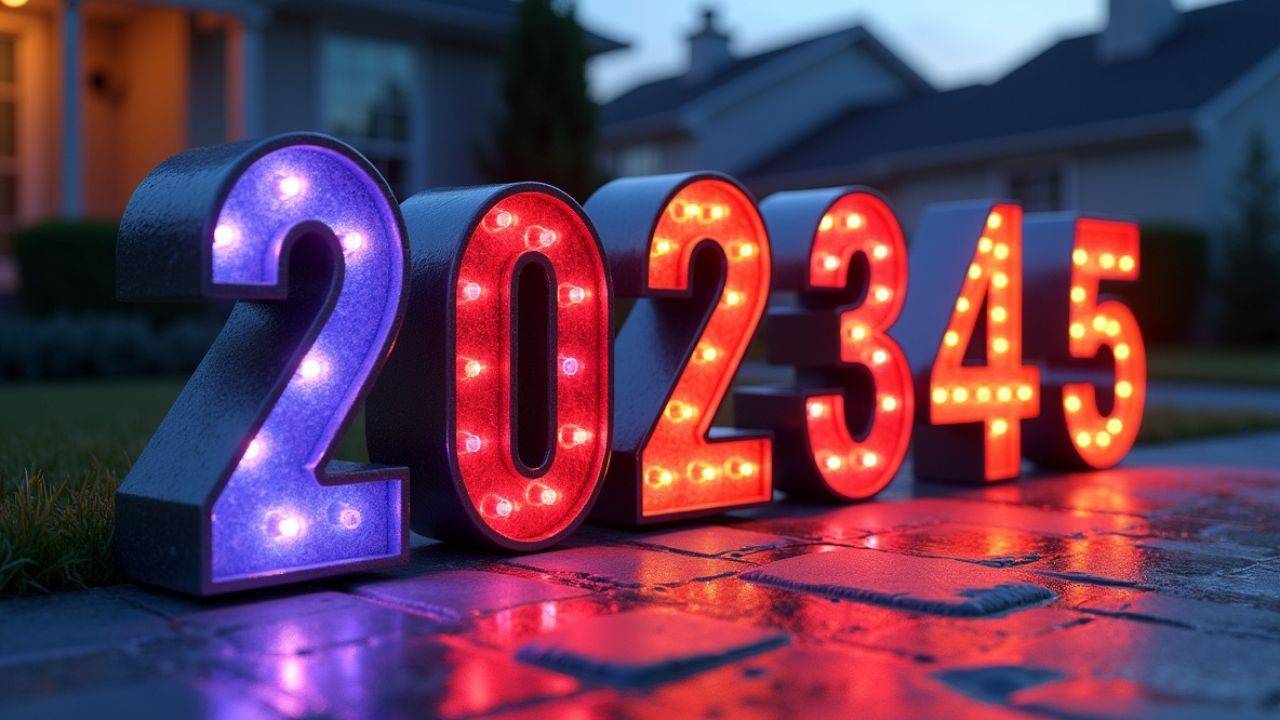LED house numbers are not just that light house numbers, they make the house look better on the street and safer. Such lit signs ensure that your address can always be read on the street regardless of the conditions such as in the fog, rain, or darkness. This can be highly critical to emergency services and food delivery and visitors getting lost in new neighborhoods. The state of the art LED designs are not only effective, but it also gives your outdoor plenty of a sleek modern feel. Wiring is forfeited in favour of solar powered solutions, eliminating electric costs. Tough conditions can be handled using weather resistant materials. There is also an added homeowner friend: smaller security advantage: well lit addresses give the idea that the household is focused; thus it keeps trespassers at bay.

Choosing Your LED Numbers
The search of optimal LED house numbers should include the compromise between aesthetics, durability, and visibility. To start with the material: cast aluminum provides a rust-proof cover of high quality; acrylic is available in an extended spread of bright colors. As you make an option of lighting, consider the brightness of the light (in lumens). A soft white (2700K-3000K) light warms up the place and cool white (4000K -5000K) light makes things visible. The solar types are good in the environmentally-conscious home; however, the battery-operated ones work in the shade. On the aspect of weather resistance, ensure that you identify IP ratings (such as IP6). This is a necessity on what will stay in the rain or snow. Lastly, select a design, which is compatible with your property. The modern facades appear most attractive with a simple Sans Serif typeface whereas Classical buildings appear better with a serif numeral.
DIY LED Number Installation
Installing LED house numbers is surprisingly easy and usually just needs simple equipment. For wired versions, switch off the outside circuit breaker and attach low-voltage wires to the wiring that is already there. For 120V systems, talk to an electrician. Solar/battery sets are very easy to set up. Just use screws or mounting tape to hold them in place. Put the numbers on the front door, garage, or mailbox at eye level (5–6 feet high). Don’t use illumination that produces glare, and check to see how well you can see from the street. Tip: After mounting, put a silicone sealant around the edges to keep moisture from getting in. Most installs take less than 30 minutes, so this is a quick upgrade for the weekend.
LED Numbers: Design Revolution
Today’s LED house numbers blend artistry with innovation. Popular trends include:
Backlit Designs: Numbers appear to float against a glowing panel.
Color-Changing Options: For indicating a festive theme, use RGB LEDs.
Smart Integrations: Sync with applications to get a flash when delivery comes.
Custom Sizes: Scale amounts to feed driveways that are lengthy or buildings with more than one unit.
Creators can use such materials as reclaimed wood with integrated LEDs or brushed steel to achieve industrial touch. To have a unified curb appeal, keep your numbers in tune with LED pathway lights or pathway lights with porches. It makes functional elements into a unified design statement 38.
Where to Buy LED Numbers
There are several places where you may get good LED house numbers. Home renovation stores like Home Depot provide affordable solutions and help you in person. Specialty lighting retailers sell high-end products like Illumitex and Litell, which come with long warranties. Online stores like Amazon and Etsy have a huge selection of styles. Read reviews to find out how they work in real life. Important things to think about before buying:
Warranty: Aim for 2+ years coverage.
Return Policies: Ensure hassle-free replacements for defects.
Certifications: Look for UL/ETL safety listings.
Expect to spend $25–$100 per digit; solar models cost 20% more but save long-term.

Maintaining LED House Numbers
LED numerals will serve you longer provided you take care of them regularly. Every month, wash away dust and foreign materials covering light with a bit of mild soap and a microfiber cloth. In case of solar panels, keep them clean at least once per week in order to maximize the charge. Periodically, supply fresh lithium batteries every two or one year. When you are in a cold area, you can keep an extra battery in your winter so that the battery will be safe. When your lights dim in an unbalanced manner, check the connectors because there might be some corrosion. A small amount of dielectric oil will prevent the occurrence of further oxidation.
Each of the most LED failures occurs due to the entry of water inside them. To rectify this, simply seal off the edges again using clear caulk per year. With minimal maintenance, a quality set lasts up to 5-7 years.
Smart LED Number Features
LED house numbers of the modern type fit into the ecosystem of smart homes. The models that are Wi-Fi enabled can:
When your doorbell rings, flash. Connect to security cameras so that they light up when there is motion. Show notifications in different colors, such as blue for parcel delivery. You may change the brightness hands-free using voice control with Alexa or Google Assistant. Geofencing switches on the lights as you get close to home. Some systems even include backup batteries that keep the digits lighted up when the power goes off. These characteristics turn address markers from passive fixtures into proactive aids for safety and convenience.
Solar vs Wired LEDs
The place on which you reside will assist in choosing whether solar or wired LED house numbers are good. Solar models are wonderful because they are convenient to install and are free to operate. They are ideal in sunny environments but fail to work in cloudy environments; they are also not ideal in very forested environments. Wired ones are either equally bright regardless of the weather at the moment but require the involvement of a specialist in some cases. The hybrid systems provide a satisfactory compromise because they install solar-paneled and battery-powered systems to reserve energy during rainy days. The most dependable options are the wired LEDs and the easiest option on the environment and use is the solar. Hint: In the northern regions, you might want to tilt your solar panels to the south at the angle of 45 so as to receive the winter light.
LED House Numbers: Quick Comparison Guide
| Feature | Solar LED Numbers | Wired LED Numbers | Traditional Numbers |
| Installation | ✅ Super simple (stick & go) | ⚠️ Needs wiring help | ✅ Easy but invisible at night |
| Visibility | 🌞 Great with sun access | 💡 Always bright & reliable | 🌑 Needs external lighting |
| Cost Over Time | $0 electricity bills | ~$3/year in power | $0 but hard to see at night |
| Weatherproof | ✅ IP65+ (rain/snow ready) | ✅ Sealed against elements | ✅ Durable but not lit |
| Smart Features | Basic models only | 🔥 Works with Alexa/security | ❌ No tech options |
| Eco-Friendly | ♻️ 100% solar powered | 🔌 Low energy use | ❌ No energy needed |
Final Thoughts
LED house numbers is a small improvement that produces a great impact. They eliminate the inconveniences of lost deliveries, ensure that your home is safer at nights and also make it a classier place to be. These lighted pointers demonstrate that style and functionality do not necessarily have to remain separate as you can choose between solar-driven style and connectivity-driven shine. The image of your home will be clear, assertive and definite as neighborhoods grow dark at night.
FAQ’s
1. Are LED house numbers hard to install?
Nope! The majority solar or battery-operated electronics can be put together by anybody with screws or tape. An electrician may be needed to hardwire wired ones, although low-voltage ones are usually plug-and-play.
2. Will they survive rain or snow?
Of course! Select devices that have a higher IP rating of say IP65 or higher. It implies that they are able to resist rain, snow, dust and temperature variations without suffering any damages.
3. Solar or wired: which is better?
Solar is the easiest (no cables, free electricity), but it needs sunlight. Wired works anywhere and always throws off the same amount of light, but it needs electricity. Pick based on where you are and how you want to set it up.
4. Can smart LED numbers do anything cool?
Of course! Others can turn a different colour at someone coming, others can flash when a doorbell rings or can be voice/phone operated.
5. How often do I need to maintain them?
Not much! You just need to clean them every now and then and change the batteries (in battery/solar variants) every one to two years. They are made to endure for years and not need any care.
